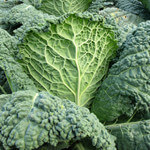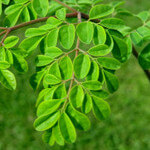 Oil pulling is a process of swishing an edible oil around the mouth for between 10 and 20 minutes, ideally upon awakening, for detoxification purposes. Its origins lie in the Ayurveda, the ancient healing system of India, and countless people from all backgrounds swear by it. In fact, if one believes the online reports written by those with first-hand experience of oil pulling, there doesn’t seem to be any condition that it can’t at least improve.
Oil pulling is a process of swishing an edible oil around the mouth for between 10 and 20 minutes, ideally upon awakening, for detoxification purposes. Its origins lie in the Ayurveda, the ancient healing system of India, and countless people from all backgrounds swear by it. In fact, if one believes the online reports written by those with first-hand experience of oil pulling, there doesn’t seem to be any condition that it can’t at least improve.
The historical and present understanding behind oil pulling is encapsulated in the ancient axiom, “all diseases start in the mouth.” Therefore, any practice that prevents problems in the mouth should, in theory, prevent (and possibly even treat) diseases that lie elsewhere. But does oil pulling actually prevent oral problems in the first place? Several studies show that it does.
Oil Pulling with Sesame Oil Can Kill Cavity-Causing Bacteria
One of the first major studies into oil pulling was the study published in the Journal of Indian Society of Pedodontics and Preventive Dentistry in March 2008. For this study, a group of Indian researchers decided to test oil pulling’s ability to remove Streptococcus mutans (a bacterium that promotes tooth decay) from the mouth.
The researchers divided 20 adolescent boys of similar ages into 2 groups: the oil pulling group, which would pull sesame oil for 10 minutes each morning before brushing, and the control group, which would swish a chlorhexidine mouthwash for 10 minutes each morning before brushing. The researchers collected plaque and saliva samples from all subjects after 24 hours, 48 hours, 1 week, and 2 weeks. Each sample would, after incubation, be evaluated for the presence of S. mutans.
The results showed that the presence of S. mutans in the plaque samples were reduced in both groups by the end of the trial. The control group exhibited statistically significant results during all 4 time periods, while the study group exhibited statistically significant results after 1 and 2 weeks. However, there were no statistically significant reductions of S. mutans in the study group’s saliva samples. Nonetheless, the researchers concluded that “sesame oil can be used as a preventive home therapy to maintain oral hygiene.”
The fundamentals of this first study (20 test subjects divided into the same 2 groups) have been repeated twice since 2008, though the research teams and their goals differed. The second study, which was published in 2009 and aimed to see whether oil pulling could help treat gingivitis, found that both the study and control groups exhibited a statistically significant reduction in “plaque index, modified gingival scores, and total colony count of aerobic microorganisms in the plaque of adolescents with plaque-induced gingivitis.” The third study, which was published in 2011 and questioned whether oil pulling could tackle halitosis, found that “oil pulling therapy has been equally effective like chlorhexidine on halitosis and organisms […] associated with halitosis.”
Coconut Oil and Sunflower Oil Are Also Effective
All of the above studies used sesame oil, which is the oil recommended by the Ayurveda. However, a Thai study published in the Asia Journal of Public Health in 2011 found that oil pulling with other edible oils could also decrease harmful oral bacteria to a comparable degree. In fact, the report notes that coconut and sunflower oil, along with sesame oil itself, are particularly effective at treating certain microorganisms: “It was found that coconut oil exhibited antimicrobial activity against S. mutans and C. albicans. Sesame oil had antibacterial activity against S. mutans whereas sunflower oil had antifungal activity against C. albicans. However, L. casei was found to be resistant to all tested oils.”
This result might explain why oil pullers who change oils from time to time often report additional or renewed benefits. Since each oil used in oil pulling contains different anti-cavity properties, a temporary change can remove bacteria that the previous oil might be less effective against. Such coverage is far more natural, and cheaper, than that provided by commercial mouthwashes.






